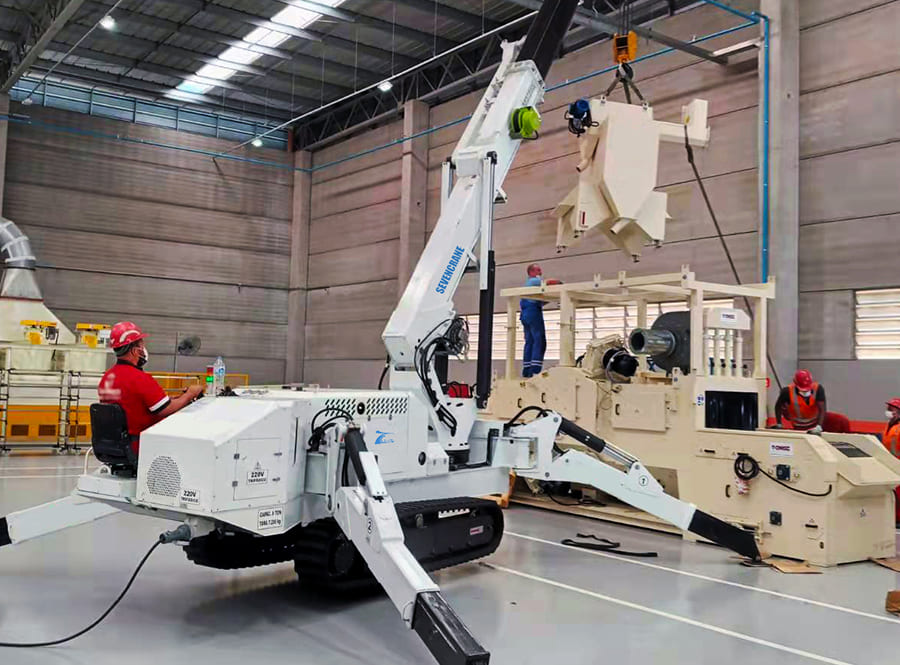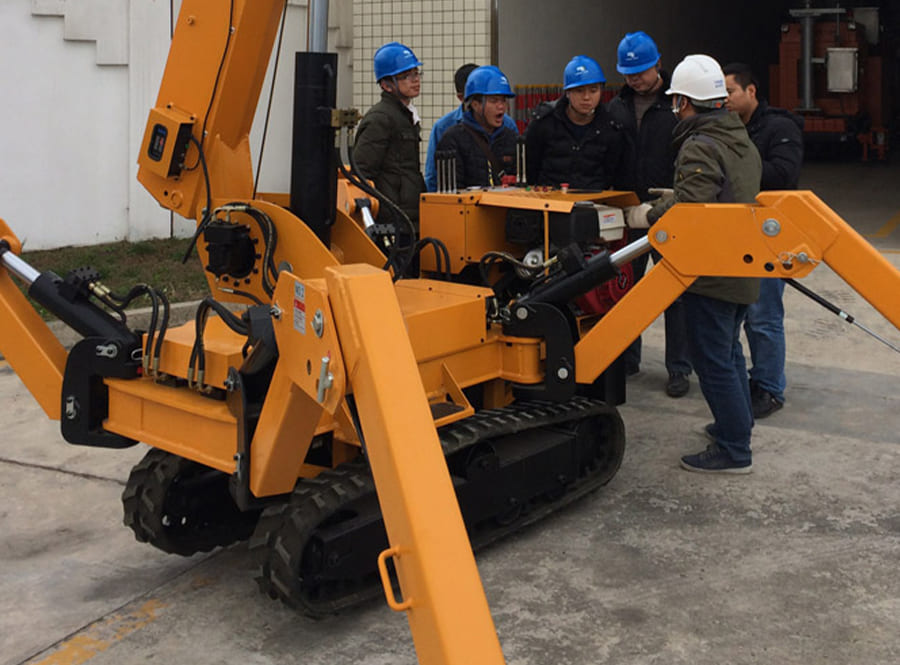The spider crane, also known as a mini crawler crane or compact crane, is a remarkable lifting machine that combines impressive lifting capabilities with a compact and maneuverable design. Resembling a spider with its multiple extendable arms, the spider crane has gained popularity in various industries for its versatility and ability to access tight or confined spaces. In this article, we will explore the features, applications, and advantages of spider cranes in different sectors.
Features and Design:
Spider cranes are designed to be compact and highly maneuverable, making them ideal for projects where space is limited or access is challenging. They typically feature a tracked undercarriage that provides stability and traction on various terrains. The main body of the crane contains a telescopic boom that can be extended or retracted, allowing for increased reach and lifting capacity. The boom is equipped with multiple articulating arms, resembling the legs of a spider, which provide exceptional flexibility and precise positioning of loads in confined areas.

Applications:
Construction and Renovation: Spider cranes are extensively used in construction and renovation projects. They excel in tasks that require lifting heavy materials, such as glass panels, steel beams, and precast concrete elements. Their compact size and ability to navigate through narrow spaces make them ideal for working in urban areas or within existing structures.
Maintenance and Repair: Spider cranes are valuable assets for maintenance and repair work in various industries. They can access elevated areas, such as rooftops or building facades, to lift and position equipment or materials. Their versatility allows them to handle tasks ranging from HVAC system installations to window cleaning operations.
Landscaping and Tree Care: Spider cranes find applications in landscaping and tree care, where their compact size and low ground pressure are advantageous. They can be used to lift and relocate heavy planters, trees, or other landscaping elements. Additionally, spider cranes aid in the safe removal of fallen trees or branches in tight or delicate environments.

Advantages:
Accessibility: Spider cranes are specifically designed to access confined or hard-to-reach spaces. Their compact dimensions and ability to navigate through narrow passages, doorways, or uneven terrains enable them to operate in areas where larger cranes cannot reach.
Versatility: Spider cranes offer a wide range of lifting capacities, typically ranging from a few hundred kilograms to several tons. They can be equipped with various attachments, such as jibs or winches, to tackle different lifting challenges. The articulating arms of the spider crane provide precise control and maneuverability, allowing operators to position loads with exceptional accuracy.
Safety: Spider cranes prioritize safety in their design and operation. Their stability systems, including outriggers or stabilizer legs, ensure secure lifting operations even on uneven ground. Additionally, advanced safety features, such as load moment indicators and overload protection systems, contribute to safe and efficient crane usage.
Conclusion:
Spider cranes have revolutionized lifting operations in industries requiring access to tight or confined spaces. Their compact size, impressive lifting capabilities, and maneuverability make them indispensable tools in construction, maintenance, landscaping, and various other sectors. As technology continues to advance, spider cranes are expected to become even more versatile, safer, and efficient, continuing to play a significant role in meeting the diverse lifting needs of modern industries.
